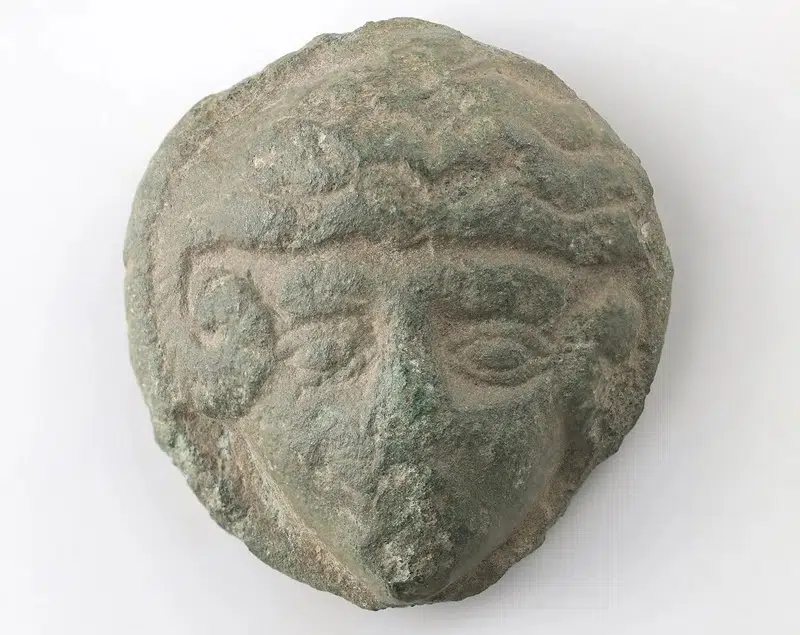
Archaeologists have discovered a bronze fitting depicting Alexander the Great on the Danish island of Zealand.
The discovery was made by Finn Ibsen and Lars Danielsen, two amateur archaeologists who were conducting a metal detector survey near the city of Ringsted.
The object is a small bronze fitting measuring no more than 3 centimeters in diameter and depicts the face of Alexander the Great.
Alexander the Great fitting dates from the Roman period
According to experts from the Moesgaard Museum, the fitting dates from the Roman period and shows a deified depiction of Alexander with his wavy hair and ram’s horns, often associated with the god Ammon.
Alexander often referred to Zeus-Ammon as his true father, and after his death, currency depicted him adorned with horns as a symbol of his divinity.
Archaeologists believe that the fitting comes from a shield and matches a similar example found in a bog at Illerup Ådal. The Illerup discovery was ritually deposited alongside 16,000 objects, such as swords, bows, arrows, lances and shields following a great battle.
Freerk Oldenburger, an archaeologist at Museum Vestsjælland, said: “It’s fantastic. Up here in Scandinavia, you don’t usually find anything about Alexander the Great, and when you stand with such a small portrait in your hands, you get excited”.
How the bronze fitting ended up in Denmark
Alexander the Great (356-323 BC) was the greatest military commander of antiquity, whose empire stretched from Greece to India when he died in Babylon aged just 32.
Many hundreds of years after his death, he was still a legend, and he became a great role model for Roman emperors. Especially the tyrannical emperor Caracalla (emperor 198-217 AD) who saw himself as a reincarnation of Alexander the Great.
During Caracalla’s reign, a great battle took place at Illerup Ådal near Skanderborg in Denmark, where two Germanic armies collided. Many lost their lives in the battle, and the swords, bows, arrows, lances and shields left behind were sacrificed to the gods and placed in a lake.
The excavation of the lake was able to show shields that were decorated with small decorative discs with portraits of warriors.
One of these decorative discs bears a portrait of Alexander the Great, which is identical to the portrait on the newly found mount from Ringsted.
The head of a statue determined by archaeologists to belong to Alexander the Great was unearthed recently during excavations in north-western Turkey.
The marble head, dated to the 2nd century AD, was found at the top of a theater in the ancient city of Konuralp, near modern-day Düzce.
Related: Is This What Alexander the Great Really Looked Like?
See all the latest news from Greece and the world at Greekreporter.com. Contact our newsroom to report an update or send your story, photos and videos. Follow GR on Google News and subscribe here to our daily email!



